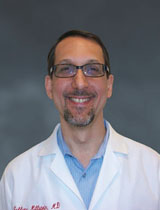Takeaway
Patients sometimes ask for interventions that conflict with clinical best practice. The most effective responses are ones that focus on patients’ needs and level of understanding rather than on the clinician’s discomfort with their requests.

Lifelong Learning in Clinical Excellence | January 17, 2024 | 1 min read
By Jeffrey Millstein, MD, Penn Medicine
One of my younger new-to-practice colleagues knocked on my door and asked for advice about a patient request. She explained that the patient left her a portal message asking if she would prescribe a sedating muscle relaxant for management of his chronic back pain at his appointment that was coming up later in the week. She knew, at age 75 with other chronic conditions, this medication would pose safety risks, and wondered how she should address his request.
When I asked how she might respond, she was inclined to tell him she was “not comfortable” prescribing that medicine to him. I recalled several times when this response only led to a stressful debate, or a patient reaching out to another clinician in the practice who was perhaps more “comfortable.”
I suggested that she first ask the patient how he came to request this medicine and inquire about his understanding of the drug’s risks and benefits. This would help her meet him at his place of knowledge. A response such as, “That medicine is unsafe for you to take – let’s think of some other options to help ease your symptoms and avoid dangerous side effects,” may land better. Whereas “I’m not comfortable” is clinician-centric and sounds self-doubting, the latter statement focuses on the patient’s needs and best interest and exudes confidence.
Most of all, I commended her for requesting some guidance. Communication challenges are some of the thorniest that we face in medicine. We are all better clinicians when we seek and provide mentorship.
This piece expresses the views solely of the author. It does not necessarily represent the views of any organization, including Johns Hopkins Medicine.

